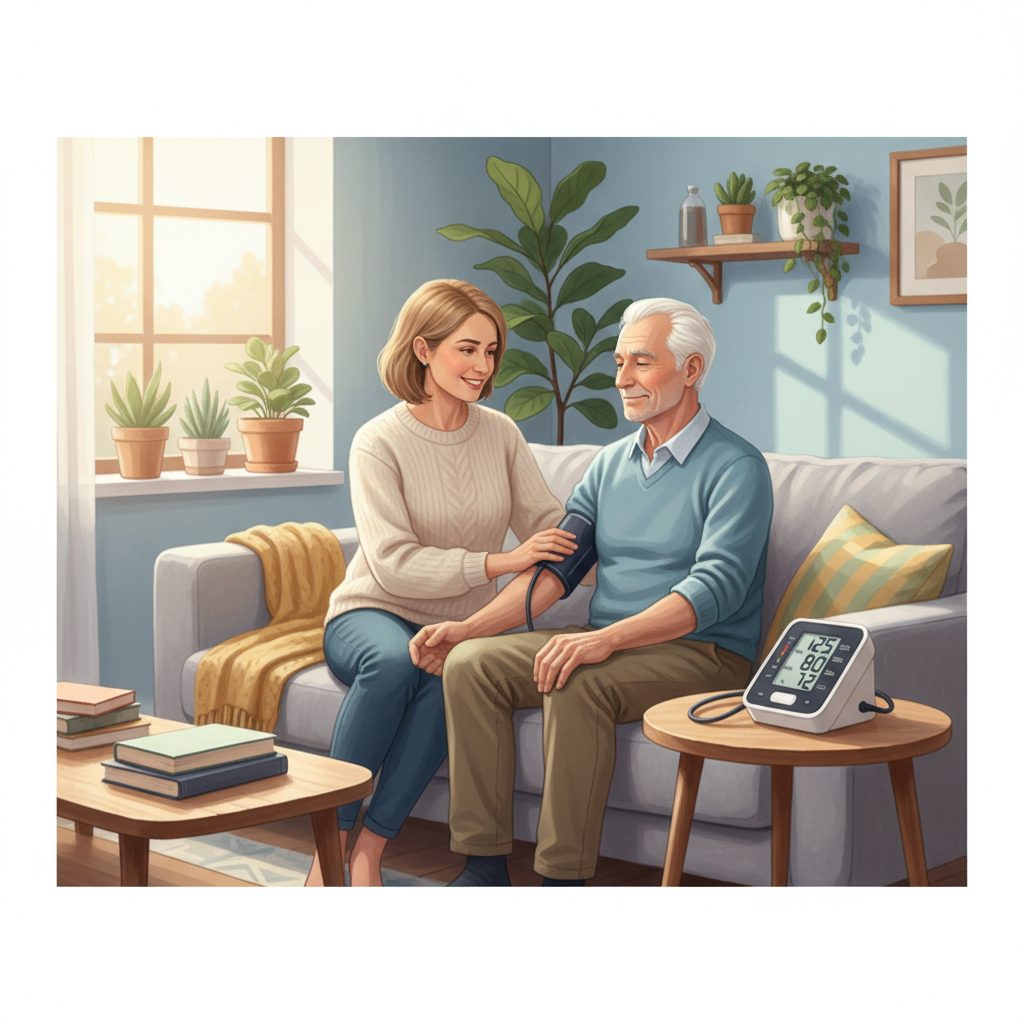How to Check Blood Pressure at Home?
- By Belal Hasan
Blood pressure is important for health. Knowing how to check it helps you stay healthy. Checking your blood pressure at home is easy. Let’s learn how to do it. You will need a blood pressure monitor. These are easy to use. You can buy them in stores. Or online.
What is Blood Pressure?
Blood pressure is the force of blood against your arteries. Arteries are tubes that carry blood from your heart. Blood pressure has two numbers. The first is systolic. It measures pressure when the heart beats. The second is diastolic. It measures pressure when the heart rests.
For example, 120/80 mmHg. 120 is systolic. 80 is diastolic. Keeping track of these numbers is important. It helps in understanding your health.
Why Check Blood Pressure at Home?
Checking at home is convenient. You can do it anytime. It helps track your health. It saves time. No need to visit a doctor every time. You can share results with your doctor later. It helps in managing health better. According to the American Heart Association, home monitoring can be an effective way to detect hypertension early.”
Types of Blood Pressure Monitors
There are two main types. Digital monitors are common. They are easy to use. They show results on a screen. Manual monitors are also available. They have a cuff and a gauge. They need more skill to use.

Steps to Check Blood Pressure at Home
- Find a quiet place. Sit down. Relax.
- Remove tight clothing from your arm. It helps get accurate readings.
- Place the cuff on your arm. It should be above your elbow.
- Follow the monitor instructions.
- For digital monitors, press the start button. The cuff will inflate.
- Wait for the reading. The monitor will show numbers. Note them down.
- For manual monitors, use a stethoscope. Listen to the heartbeat. Inflate the cuff. Slowly release air. Note the numbers on the gauge.
Repeat these steps twice. Take an average of the results.
Best Time to Check Blood Pressure
Check it in the morning. Before eating. Before taking any medicine. Also, check it in the evening. Keeping a diary helps. Note the date and time. Note your readings too.
Understanding Your Readings
| Category | Systolic (mmHg) | Diastolic (mmHg) |
| Normal | Less than 120 | Less than 80 |
| Elevated | 120-129 | Less than 80 |
| High Blood Pressure Stage 1 | 130-139 | 80-89 |
| High Blood Pressure Stage 2 | 140 or higher | 90 or higher |
| Hypertensive Crisis | Higher than 180 | Higher than 120 |
If your readings are high, see a doctor. They can help you manage it. Do not ignore high numbers. They are serious.
Tips for Accurate Readings
- Sit quietly for 5 minutes before checking.
- Keep your back supported.
- Place your feet flat on the floor.
- Do not talk while checking.
- Avoid caffeine and smoking before checking.
Benefits of Regular Checks
Regular checks help in early detection. They help prevent health issues. They help in managing lifestyle changes. They provide peace of mind. You stay informed about your health.
Frequently Asked Questions
How Do I Prepare To Check Blood Pressure At Home?
Sit quietly for 5 minutes. Rest your arm on a table. Relax and breathe.
What Equipment Do I Need To Measure Blood Pressure?
You need a digital blood pressure monitor. A cuff that fits your arm is essential.
How Often Should I Check My Blood Pressure At Home?
Check twice daily. Once in the morning and once in the evening.
Why Is It Important To Check Blood Pressure At Home?
It helps track your heart health. Detects any issues early for better management.
Conclusion
Checking blood pressure at home is simple. It’s important for health. Use a monitor. Follow the steps. Keep track of your readings. Understand them. Share them with your doctor. Stay healthy. Stay informed.
